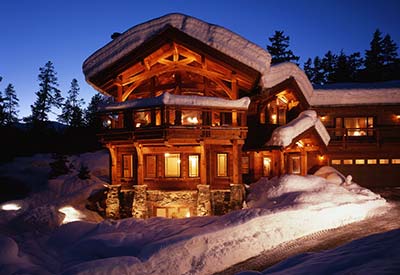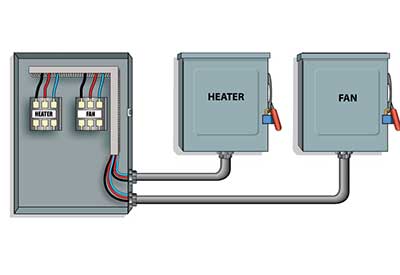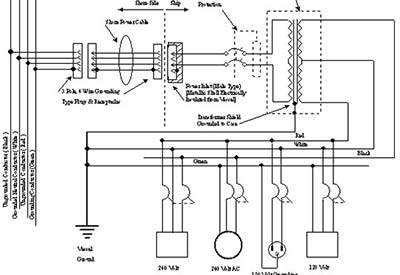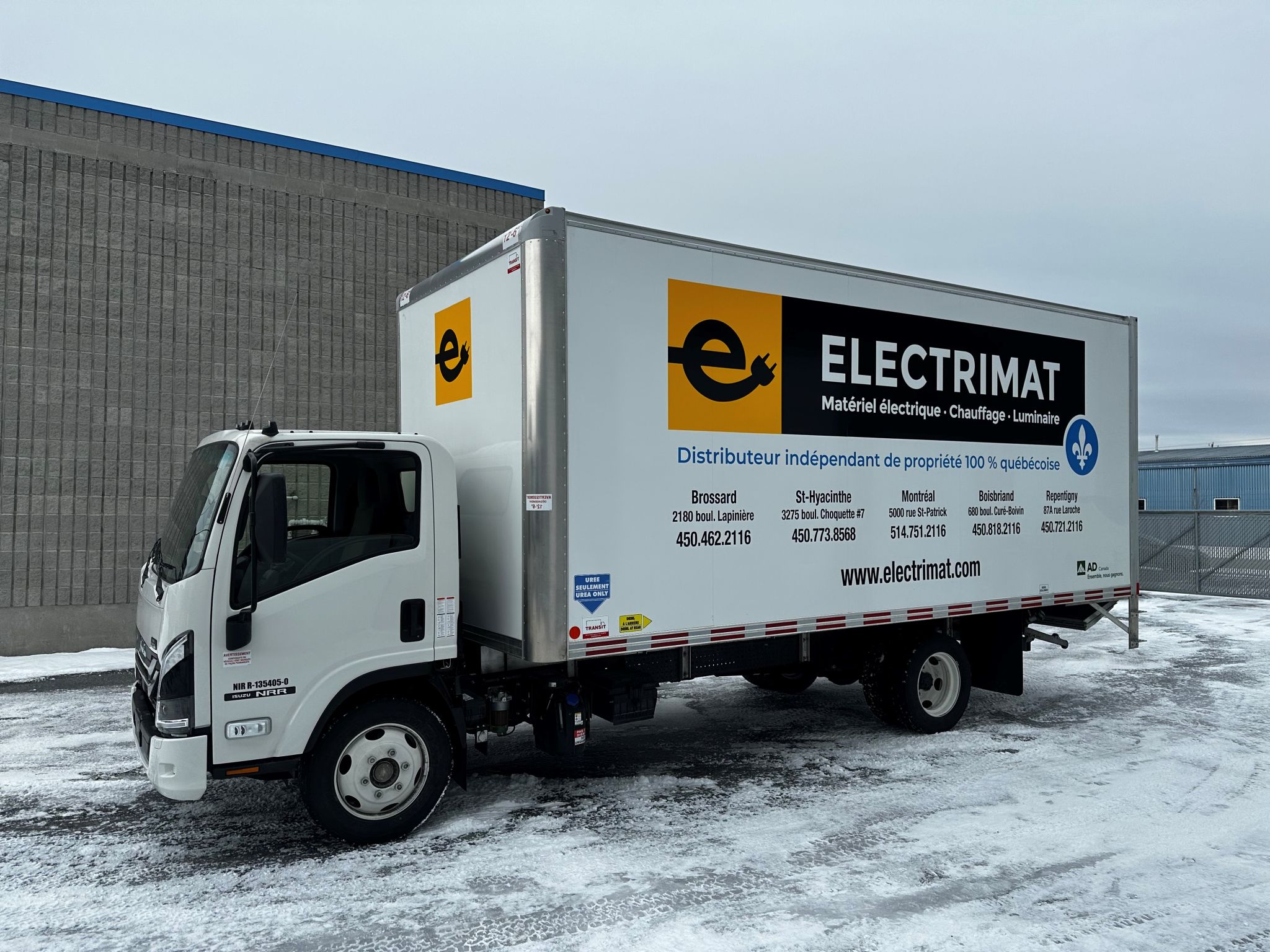Les exigences complémentaires décrites dans l’annexe G du Code électrique

Pierre McDonald
Pour une installation électrique, répondre aux exigences minimales du Code électrique n’est pas possible en suivant uniquement les exigences d’installation de la Partie 1 du Code national de l’électricité. L’électricien peut penser qu’il est responsable pour la partie de l’installation qui répond aux exigences du Code, il peut être surprenant d’apprendre que certaines exigences du Code national du bâtiment du Canada doivent également être rencontrées. À titre d’exemple, pour la construction résidentielle, le pare-vapeur est une exigence importante du Code national du bâtiment du Canada. L’annexe G fait une liste de ces exigences liées aux installations électriques et qui ne sont pas incluses dans le Code national de l’électricité, mais exigées par le celui du bâtiment.
For an electrical installation, meeting the minimum code requirements is not achieved simply by following the installation requirements of the Canadian Electrical Code Part 1 (CE Code). While electricians might believe that they are responsible just for that part of the installation that meets the CE Code, it might be shocking (no pun intended) to learn that they must also meet certain requirements of the National Building Code of Canada (NBCC).
Here’s an example: for residential construction, the vapour barrier is an important part of the NBCC requirements, yet it is the electrician who is charged with installing vapour hats around all exterior wall and ceiling outlets. This is a very small example of requirements outside of the CE Code that should be understood by electrical tradespeople.
The CE Code includes an Appendix G, which is an informative appendix that lists requirements related to installations that are not governed by Rules of the CE Code, but are required by the NBCC. CE Code rules that are referenced to the NBCC will have the words “See Appendix G” in brackets associated with them. These references only cover those rules that are part of the fire protection requirements contained within the NBCC so you will not find the reference to the vapour barrier requirement mentioned above. (FYI, see NBCC 9.25.3 for Air Barrier Systems and 9.25.4 for Vapour Barriers.)
The application of Appendix G is stated as follows. It should be noted that the appendix is based on the 2015 edition CE Code and the 2010 edition NBCC:
· G2.1 – The intent of this Appendix is to advise Canadian Electrical Code, Part I users of performance requirements for electrically connected fire-protective equipment required by the National Building Code of Canada.
· G2.2 – Special fire protection requirements, such as use of thermal insulation, fire spread, flame spread requirements for electrical wiring and cables, flame-spread requirements for combustible raceways, and construction of electrical equipment vaults are covered by this Code (e.g., Rules 2-126, 2-128, 2-130, 2-132, 26-354, etc.).
· G2.3 – Provincial and municipal building codes may deviate from the National Building Code of Canada, and users of this list should also check those codes.
Looking into a few examples as to how this appendix will assist, we can begin with the CE Code Rules 2-128 Fire Spread, 2-130 Flame spread requirements for electrical wiring and cables, and 2-132 Flame spread requirements for totally enclosed non-metallic raceways. All mandate that they meet some requirements within the NBCC. While there are also Appendix B notes to these rules, the Appendix G notes refers the reader to several sections, articles and sentences within the NBCC. For example, Rule 2-128, refers the reader to:
· 3.1.9.1.(1) and (2), Fire stopping of service penetrations through fire-rated assemblies of fire separations
· 3.1.9.3., Penetration of fire-rated assemblies or fire separations by wires, cables, boxes, and raceways
· 3.1.13.4., Flame-spread rating for combustible light diffusers and lenses
· 9.10.9.6., Electrical wiring and boxes and penetrating a fire separation
Rule 2-130 references:
· 3.1.4.3.(1), Wires and cables in combustible buildings
· 3.1.5.18.(1), Wires and cables in noncombustible buildings
· 3.1.5.18.(2) and (3), Wires and cables within plenums of noncombustible buildings or wiring and cables that extend from plenums
· 3.4.4.4.(1)(b), Restrictions on wiring and raceways penetrating an exit enclosure
· 3.6.4.3.(1), Equipment and wiring within plenums
And Rule 2-132 references
· 3.1.5.20., Combustible raceways in noncombustible buildings
· 3.1.5.20.(2), Combustible raceways within plenums of noncombustible buildings
In a nutshell, these references point the code user to requirements that could affect the installation or at least provide additional information for the installation. Details of these references should be fully investigated and understood by the electrical installer to ensure compliance with the CE Code rules. These references include:
· Fire stop requirements that are subjected to the fire test method in CAN/ULC-S115 – Fire Tests for Firestop Systems
· Requirements for wiring, cables, conduit, outlet boxes and similar equipment that are allowed to penetrate a fire rated assembly under certain conditions
· Information regarding flame spread ratings of combustible light diffusers and lenses, as well as limits on the installation of these products
· Information regarding the FT rating of wires and cables, including optical fibre cables as well as installation requirements in combustible and non-combustible installations
Section 32 and certain rules within Section 32 also have substantial references in Appendix G to the sections, articles and sentences within the NBCC. This stands to reason as Section 32 “applies to the installation of electrical local fire alarm systems, permanently connected carbon monoxide alarms, and fire pumps required by the National Building Code of Canada.” While the rules in Section 32 cover conductors, wiring methods, equipment bonding, electrical supervision, circuitry and overcurrent devices for power supplies, and smoke alarms and carbon monoxide alarms in residential occupancies, the substantial requirements for installating fire alarm systems exists within the NBCC. It is the NBCC which mandates when a fire alarm system must be installed, zoning and annunciation of fire alarm systems, elevator emergency recall (alternate floor recall for elevators), visual signal devices in a fire alarm system, and the mandatory use of CAN/ULC-S524 – Installation of Fire Alarm Systems as per 3.2.4.5, to mention just a few.
The same holds true regarding the rules for Fire Pumps, 32-200 to 32-212. It is the actual reference within Appendix G to the NBCC sentence 3.2.5.18. that mandates the use of NFPA 20 standard – Installation of Stationary Pumps for Fire Protection.In fact, Section 32 has 53 references to requirements in the NBCC.
For some electrical installers this might not mean too much, while for others these requirements must be clearly laid out. This informative Appendix G first appeared in the 1998 edition CE Code and has provided references to those installers who must understand these requirements to fulfill contractual obligations. I have simplified the NBCC requirements to illustrate a few of the requirements associated with the NBCC that could affect the electrical Installer. It is clear that not all requirements regarding electrical installations are written in the CE Code and can easily be found. Using all the tools available, including the Appendix G references, will provide those answers.
Pierre McDonald, CET, is Senior Regulatory Affairs Representative/Répresentant Principal, Affaires Réglementaires, Underwriters Laboratories of Canada Inc. Based in St. Albert, AB, Pierre has been a member of the Canadian Electrical Code Part 1 technical committee as well as several subcommittees including serving as Chair of Sections 6 and 76 and as a member representing regulators on several other CSA committees. Pierre is still active with code development and interpretation.











